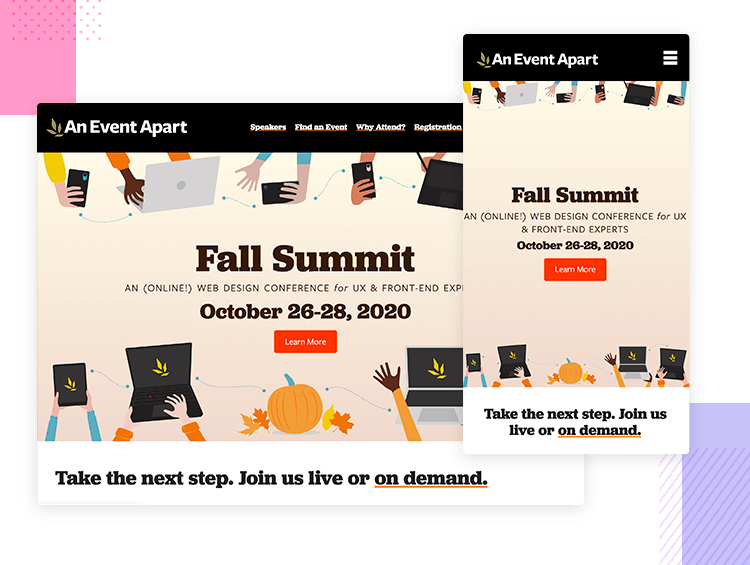
Then, determine what technologies you’ll use to create them. The purchasing CTA for mobile users could link directly to your downloadable app, while the desktop computer version would link to the desktop app download, and then offer options for mobile or tablet as a secondary CTA.Ī: The first component to consider is your different responsive designs.

They can hone in on specific page content to complete the user experience.Īt the content level, you can optimize your design to match the audience mindset across different devices. Then, when design teams receive page development requests, they already have the components ready to go. Consider what it takes for each component to shine in different viewport widths and screen resolutions. Think about the cards, carousels, and the calls to action (CTA). Instead of thinking about an entire product page, think through how the marquee on a product page works responsively. Instead, web designers should focus on responsiveness and functionality at a component level. But that amount of work isn’t sustainable for an agile organization.

RESPONSIVE WEB PAGE DESIGNS HOW TO
Then they would think about how to make it work on mobile devices and tablets. In the past, web designers would start by designing a website for a desktop computer. If you think about responsiveness only in terms of one-off projects, you will end up duplicating efforts among web designers, engineers, and content creators and could create three times as much work for your team. A: Responsiveness must be built into your processes and your systems, not just a web page here and there, or a specific marketing campaign.


 0 kommentar(er)
0 kommentar(er)
